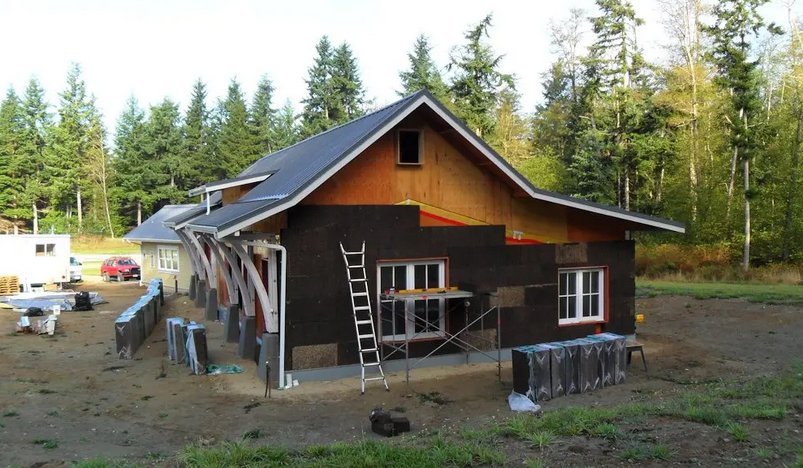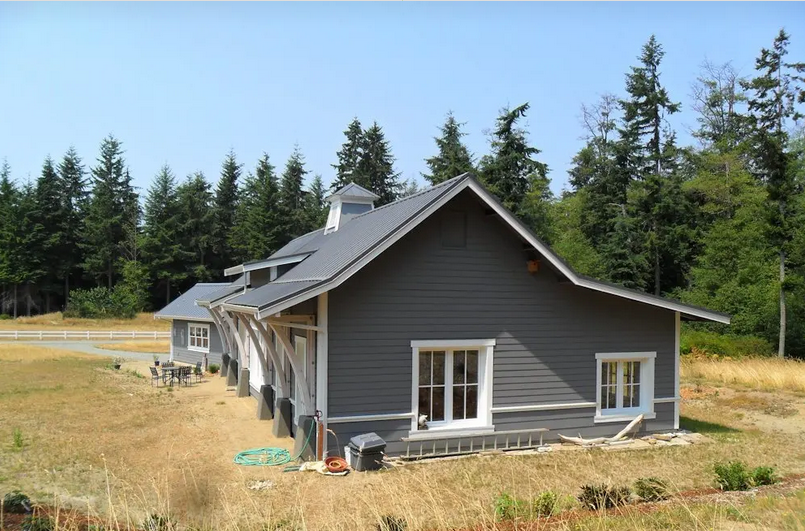Natural cork has been harvested sustainably since Roman times. Cork bark can be harvested every 9 years from long-lived cork oak trees. After punching out corks for wine stoppers, the leftover cork can be ground, placed into molds, and injected with steam to form blocks of insulation. Cork binds to itself, so no additional binding agents are required. Most of the processing energy is obtained by firing a boiler using cork dust, so the embodied energy is very low.
 Cork is largely carbon, is fire- and insect-resistant and lasts a long time. Cork used in the 1570s to insulate a convent can still be viewed today. Cork is unsurpassed at sequestering carbon. It is good to go beyond energy efficiency to carbon efficiency, by using sustainable materials which both sequester carbon and have low embodied/fabrication energy.
Cork is largely carbon, is fire- and insect-resistant and lasts a long time. Cork used in the 1570s to insulate a convent can still be viewed today. Cork is unsurpassed at sequestering carbon. It is good to go beyond energy efficiency to carbon efficiency, by using sustainable materials which both sequester carbon and have low embodied/fabrication energy.
 Ken Dickey’s house walls include 7 inches of ThermaCork insulation. With low energy demand, his total power bill for the year, which includes heating, lights, and EV charging, amounts to only about $100!
Ken Dickey’s house walls include 7 inches of ThermaCork insulation. With low energy demand, his total power bill for the year, which includes heating, lights, and EV charging, amounts to only about $100!
 He built to the Passive House energy performance standard, which in addition to insulation pays attention to air sealing, heat recovery ventilation, and designing out energy leakage. The Passive House model assures that one does not under- or over-insulate, but any kind of insulation can be used: straw bale, conventional, rammed earth, sheep wool, even cork.
He built to the Passive House energy performance standard, which in addition to insulation pays attention to air sealing, heat recovery ventilation, and designing out energy leakage. The Passive House model assures that one does not under- or over-insulate, but any kind of insulation can be used: straw bale, conventional, rammed earth, sheep wool, even cork.
 You can read the original article at cleantechnica.com
You can read the original article at cleantechnica.com

